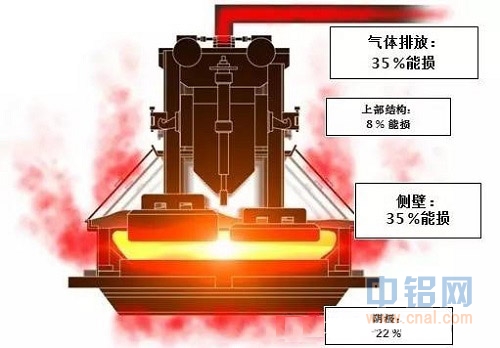The energy recovery technology company of GOODTECH in Norway has recently developed a unique active cooling and heat recovery technology for electrolyzers. It has already achieved large-scale application in aluminum plants and has begun to promote a wide range of technical equipment. This will make a major contribution to the energy saving and emission reduction of the electrolytic aluminum industry.
The technology is based on heat pipe technology, oil is a heat transfer medium, its thermal conductivity is 1000 times that of copper, and there is no thermal stress.
As we all know, during the production of electrolytic aluminum, approximately 13,000 degrees per ton of aluminum is consumed, about 50% of the heat generated is used in the reaction process, and the other 50% is emitted as waste heat. GOODTECH's process can recover about 50% of the waste heat (that is, about 25% of the total heat), and the amount of heat recovered is equivalent to saving 3,000 kWh per ton of aluminum.

In addition, through active cooling, the thickness of the bath slot can be controlled, which can strengthen the current and increase the output of each cell by 20%. Controlling the thickness of the groove helps to produce a lot of benefits for the production of electrolytic aluminum: ensuring stable production and increasing efficiency.
The process recovers the waste heat of the electrolytic cell through a two-stage system. The first stage is to cool the exhaust gas at the top of the cell and recover the heat. This can reduce the temperature of the exhaust gas, increase the life of the bag, and reduce the fan load. The second stage is the cooling and heat recovery of the side walls of the cell.
The heat recovered has many uses. If used in thermal power plants, it can increase power generation efficiency, reduce CO2 emissions, and save about 10% of coal.
In terms of safety, GOODTECH also has full consideration. First, the heat exchangers on the side walls of the electrolytic cell have protective devices. In addition, each heat exchanger can be bypassed so that when a heat exchanger fails, it will not affect other heat exchangers and overall operation.
Compensation Resistors Gauges,Temperature Compensated Strain Gauge,32Ohm Temperature Compensated Strain Gauge,95Ohm Temperature Compensated Strain Gauge
Zhejiang Nanhua Electronic Technology Co., Ltd , https://www.nhloadcell.com